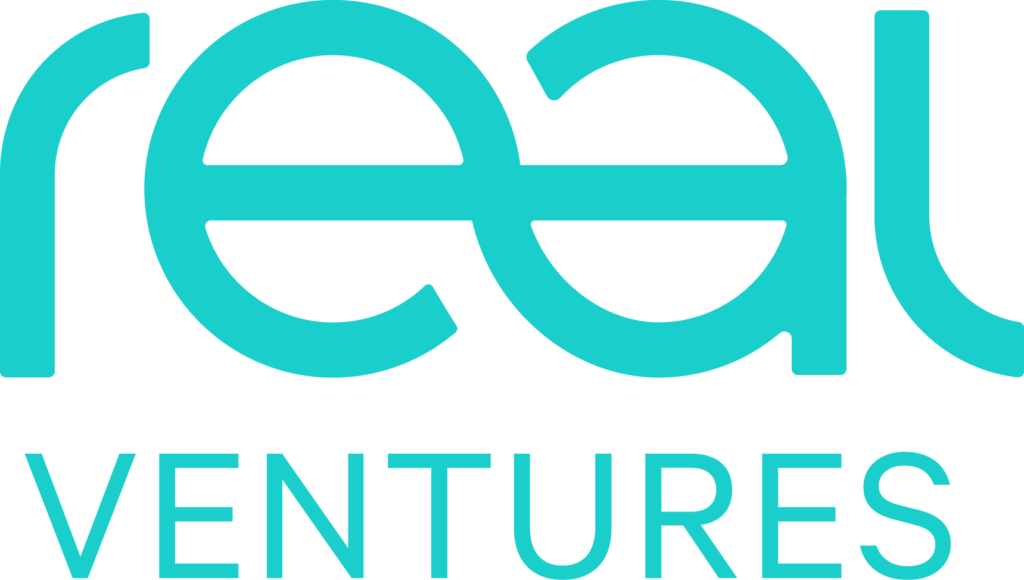You’ve done all of your homework. You’ve painstakingly crafted a bullet-proof pitch, allotted the necessary time to your fundraising process, researched the partners and firms you want to pitch to and built a pipeline of meetings that will help you to win. You’re now in the thick of things — building personal connections with VCs, pitching your compelling startup story — and you understand the difference between genuine and feigned interest. You’re starting to get follow-up meetings and know that a term sheet or two are around the corner if you can just keep your head in the game. So how do you ensure that you don’t choke now? How do you go from those initial meetings to the term sheet of your dreams?
If you missed it, I wrote about building strong and compelling connections in your first meetings in my last post. In this final article about Series A Fundraising, I’ll explain what to do to ensure success through your subsequent meetings, partnership pitches and diligence process. But first, a short recap on the winning mindset before going into your meetings.
Keeping your head in the game
If you’re going to get your funding, you need to be optimistic despite feeling crushed at times. You need to be able to maintain your composure and your positive outlook. Remember: never take more than two to three meetings a day. Not only could you get stuck in traffic, but if you have a meeting that doesn’t go well, it may impact you, leading to poor performance in subsequent interactions. Packing five meetings in a day won’t give you the space to change your mindset.
It’s also tiring to be switched on in meeting after meeting. You’re using high intellectual and emotional capacity to dig deep into your personal database of knowledge. Your brain can become overwhelmed. By the time you do your third meeting, you may have hit your limit. Also, if you’re not a morning person, then don’t schedule morning meetings. You get one chance to make an impression and it’s better to reschedule than to put yourself in a situation where you can’t perform. If you’re sick and are supposed to pitch, then simply reschedule.
Who should pitch
The CEO needs to understand every facet of the business well enough to have a thorough and meaningful conversation or it will create doubt in the mind of the VC on the individual’s leadership capabilities. Packing your meetings with two other founders is certainly not bad, but it’s not the ideal scenario. If your technical co-founder is a really great communicator and can add significant value to the story, then it may make sense to have them there. If not, it’s better to have the CEO run the meetings.
It’s also crucial that you have a team and structure in place to ensure that the company keeps running while you’re away. That means the CEO is out fundraising and only brings in other members of the team or other co-founders when it’s requested or necessary.
Moral support
It’s really important, as you’re grinding it out, to have someone or people who are there for moral support. Fundraising is like being on a lonely island. Find the people you can lean on, vent to, and ask for advice, whether it’s a family member, co-founder, advisor, seed stage investor or all of the above.
Getting feedback
It’s possible to have a really bad meeting despite excellent preparation. You could have practiced your pitch, nailed the punchy one-liners and built a really strong ancillary story around your deck and the VC still might not be interested. If that’s the case, there’s not much you can do about it. Cut the loss, stay positive and move on. It’s your right to ask for feedback, but the VC isn’t obliged to give it to you. Remember that the typical Series A VC invests in less than 3 companies a year. What gets them over the finish line are a million different variables that you can’t always plan for. Remain respectful and keep the door open. It’s not entirely uncommon for a VC to come back to an entrepreneur after they initially passed. What’s most important about meetings where the outcome is unclear is not to let it affect your mindset.
Filling in the gaps
After your first meeting, you switch from teaching the VC why your business is incredible to finding out if there are information gaps or pet theories that could make them feel uneasy about the business. Your job isn’t to pacify their concerns with whatever comes off the top of your head, but rather to acknowledge and try to understand their underlying fears and where they’re coming from. You can do that by probing gently and asking if anything about the company and vision seems scary.
You can acknowledge the risk by saying things like “In the early days this weighed heavily on us, but after diving in deep, we realized it wasn’t going to be as big a challenge as we thought.” Be authentic. Take note of the important messages they’re communicating. Take a deep breath and don’t get emotional. Remember: VCs are trying to mitigate risk with quality information. They know that the majority of deals won’t turn into unicorns. Amazing entrepreneurs are incredible listeners, they aren’t used-car salesmen trying to convince someone to buy off the lot before the clearance sale ends. Provide the information and let the VC mull it over.
Following up
After you go through your first 10 or 15 meetings, you’ll likely have a couple of second or third meetings, and then sometimes the communication will stop. At this point, you will have met a second partner, you’ll have sent them access to the data room (more on this later), they may have requested a specific dataset, which you provide, and then all of a sudden they ghost on you. While your inclination will be to get nervous and start emailing them, I urge entrepreneurs to give the VC the appropriate amount of space. Typically, one week after a second or third meeting, with no communication, it’s appropriate to follow up.
Don’t rush them: the VC has a lot of other things to do. VCs are operating complex businesses themselves, so give them space. If you don’t hear back after more than a week, it’s okay to follow up. They may just be doing homework. Don’t assume they’re not interested.
Setting up your data room
VCs are going to ask you for data and documentation, and it’s ideal to set up your data room before you leave for your meetings so that you’re not rushed or seen as disorganized. Typically, the data room will include your:
- cap table
- legal agreements
- financial model
- PNL cash flow statements and balance sheets
- product roadmap
- org chart
- technical documents
- all of your IP, where the origins are and what you built vs. what you what you’re using off the shelf
- customer references
- background check (though they will likely ask to run their own)
You should also have a subset of documents related to the information you anticipate they’ll ask for. It could be cohort analysis. If it’s a marketplace, it could be your customer retention, lifetime value, repeat rate or churn rate. If it’s an AI/ML company, it could be the models and algorithms that you’re using off-the-shelf or that you’ve built yourself. You should anticipate what they’re going to want to sink their teeth into ahead of time and have that data readily available. Of course, you can’t predict everything someone’s going to ask you, so it’s ideal to have someone on your team who can retrieve information and supply it in an easy and understandable way.
You also need to make sure that your data room is well-organized, that the information is accurately represented and up-to-date. Your cap tables are a window into the company. Make sure that you’ve assessed the cap table, and that the numbers, price and values are correct and broken down into their subsequent series.
Be conscious of what you share
You also need to remember that what you share is at your discretion. You need to be able to judge what genuine interest is versus sneaking around and sniffing. An unscrupulous VC may be speaking to a competing company, evaluating both decks, both financials, both cap tables. You have to be able to read intent. If they are only interested in understanding the financial model, cohort data, transactional information, and very specific IP that is the company’s competitive advantage, and they’re not augmenting those with questions about the future, the opportunity, the team and future hires, then maybe they’re leaning toward having a competitive advantage on information rather than genuine interest. That doesn’t happen often because VC’s reputations are very important. But it happens. Be aware. Use your best judgment and instincts to distinguish genuine interest from competitive advantage on information.
The partnership pitch
The partnership pitch can be intimidating because you’re pitching to a room of 10 to 15 people, possibly more. At this point, you’re going to tell your story to a much bigger audience, some of whom may be disengaged. Hopefully, because you’ve gone through dozens of meetings, the story will be more refined, you will have gained confidence, understand the questions that are going to be asked, and know which sound bites and ancillary information people are most interested in hearing.
During the meeting, people who don’t understand the space will ask questions. The more clarifying questions they ask about the business, the more doubt you can assume there will be when you leave the room. The more “why” questions around the opportunity, around the vision, the future, the more you can assume that the people around the table really understand the fundamentals of the business. What they want to determine now is whether this is a big enough opportunity and a company that they can support to succeed in scale.
When you leave, the partnership will discuss the opportunity. Do they believe in your team given the opportunity? Are they bullish on the space? Do they believe this company can be successful?
The likely next step will be more requests for information. At that point, you roll with it and provide access to the requests as efficiently as you can. Don’t read this follow-up as a negative cue. Use it as an opportunity to present an even stronger story to everyone in the partnership. Your job is to help them make the most informed decision. If they say no, that’s why you have 40–50 meetings lined up. If they say yes, then great.
The best-case scenario
If you do an exceptional job of communicating the value of the company and support your story with documentation and data, the optimal scenario is to end up with two to three partnership pitches clustered within days of each other. If you nail the timing, then you can let the VCs know that you’re pitching to a number of partnerships within the week. It’s a very honest message if it’s true. And always be honest — do not embellish the truth — because VCs know each other.
This situation is optimal because it puts a time trigger on the VCs to make a decision, and brings about the possibility of receiving more than one term sheet. If you get more than one term sheet, then you have optionality. You can pick the best firm to work with.
Picking the right partner
In this ideal scenario, it’s important to think hard about how you choose who to work with. Don’t automatically choose based on the valuation. You need to take into account the partner value — which partner is more likely to help you? Are they fully aligned with your vision? Do they really believe in how you’re going to connect the dots from this round to the next? Or do they have a belief in the idea but don’t fully believe in the team and therefore put certain provisions in the term sheet that protect them against doubts they have about the business?
With two term sheets, you can negotiate. You can discuss alignment, valuation, vision and voting rights, who appoints independent board members or how many board seats there will be. These are important things that you now have more influence over. Again, the objective isn’t to squeeze the pieces, but rather, to make sure that this is a true partnership. This is why you should follow a process — not because you’re trying to get the highest valuation, but because you’re looking for a partnership that is aligned and fair. When you’ve done that, then everyone’s happy. Your previous shareholders and investors are happy. Your employees are happy and your new partners are happy.
What to do with a low valuation
The valuation is a reflection of how the VC sees the company at the present stage. If it is much lower than you expected and it’s the only term sheet you get, then your view of the company is not aligned with that of the VC. In this case, you’re not in a position to negotiate.
If you get two term sheets and both VCs give you a valuation within ± 5 percent of each other, then you also can’t negotiate. Don’t try to push them up by saying that you got a better offer from someone else. As I said, VCs talk to each other. If you’re caught lying, then your credibility goes down the toilet. And your credibility is everything.
You can negotiate, however, when one VC gives you a valuation 15–20 percent higher than the other. If you believe the other VC would be a better partner and is more aligned on vision, mission and values — they might have more experience, deeper networks, better support in connecting the dots from this round to the next — then it’s your duty to present both deals and make a recommendation to your board. If there is a material difference in valuation and you believe that the lower valuation VC is a better partner for the company, then by presenting the facts, your board is more likely to support your choice because the alignment is stronger. The longer term outcome of that relationship could be bigger and better for the company.
If your board suggest that you take the better deal and you agree, then it’s your job to go to the other VCs and say, “Look, I really want to work with you but I’ve got another term sheet from another great VC at a much higher valuation. My board is not comfortable taking a deal at a much lower valuation. Can we work on this together?” By telling them the truth, the VC is more likely to shift their valuation.
Summing it up
Fundraising is hard. It’s a gruelling process that takes all of your time and energy but if you’ve decided to take the VC funding route, it’s simply part of the journey. Your job as a founder is to be spectacularly prepared: to understand how VCs tick, how to build strong healthy relationships, and what ultimately, will lead to the greatest success for your startup. The advice I’ve compiled in this and the past posts is based on my own experiences as an entrepreneur in Silicon Valley and that of the companies I’ve supported through their fundraising processes while working at Real Ventures. It works. You have to put in the time but if your company and vision are great enough to hit it out of the park, you will get those term sheets.
**********
For more insights into the VC fundraising process as well as founder stories, ecosystem deep dives and industry trends, sign up for our monthly newsletter and follow us on Twitter, LinkedIn and Facebook.




